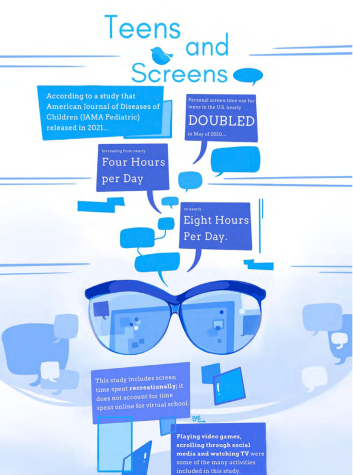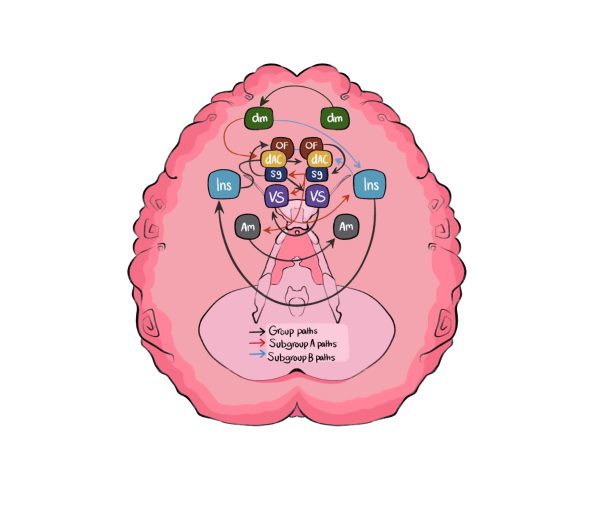The Effect of Screen Time on Eyes
How increased screen time affects our daily eye health.
Over time, technology has become an integral part of learning in classrooms. After the pandemic, our dependence on technology increased as schools shifted to online platforms. Old ways of learning morphed into an online format, utilizing web-based resources such as Zoom, Google extensions, Canvas and Schoology. Now that we are back to in-person learning, some of these platforms are staying and students continue to use screens on a daily basis.
According to a study that American Journal of Diseases of Children ( JAMA Pediatric) released in 2021, personal screen time use for teens in the U.S. nearly doubled in May of 2020, increasing from four hours per day to nearly eight. This study includes screen time spent recreationally, playing video games, scrolling through social media and watching TV; it does not account for time spent online for virtual school.
It seems that we can’t escape screens along with the high-energy blue light they emit. Many people have found blue light glasses to help with the eyestrain that comes with staring at a screen for prolonged periods. In fact, the global market for blue light eyewear is predicted to increase to $28 million by 2024, up from $19 million in 2020, according to 360ResearchReports, a market research company.
Dr. Stephanie Krieg, an Associate Doctor at Dr. Steven Lutz & Associates in Ann Arbor, explains that regular reading glasses instead of blue light glasses may be a solution to eyestrain. Some patients don’t realize that they actually need a prescription to focus on screens. Blue light isn’t harder to focus than other types of light, one reason that screens are harmful is because they are held so close to our eyes, and it’s naturally harder for the eye to focus on a close object rather than one further away.
Dr. Krieg emphasized that the effects of blue light may not be as harmful as we think. She explained that there are currently no studies that show there is any permanent vision or eye tissue damage from staring at devices too much. The eye also doesn’t react differently to blue light compared to other types of light: it isn’t any harder for our eyes to process.
“Time will tell if there is true long term damage.” Dr Krieg said. “Most of the problems with devices is the effect of blue light with circadian cycles and irritation and dryness of the eyes due to decreased blinking when looking at devices.”
Dr. Kreig encourages talking to an eye doctor and making sure you’re aware of any visual issues you have. She also recommends the 20/20/20 rule: every 20 minutes look at something 20ft away for 20 seconds.
Similarly, according to Dr. Meagan Tucker, Optometrist at Kellogg Eye Center, the light from our devices isn’t strong enough to cause damage, even though blue light is high-energy and has shorter wavelengths. However, extremely high intensities of blue light, like nail lamps or teeth bleaching, can damage eye tissue. The only threat that blue light from our screens poses is to our sleep, as blue light helps regulate circadian rhythms. According to the Center for Disease Control (CDC) circadian rhythms are internally driven cycles that rise and fall during the 24-hour day. They help you fall asleep at night and wake up in the morning.
“The best practices for preventing eye strain are using artificial tears throughout the day, anti-reflective coating on your glasses and the 20-20-20 rule,” Dr. Tucker said.
There isn’t enough research to suggest that devices are emitting light that is harmful to the ocular (eye) tissues or impacting our ocular (eye) health, so it may not be a huge area of concern. Digital eye strain is common and it’s normal to experience various side effects because our eyes are being kept open for increased amounts of time. The best solutions are taking short breaks during extended periods of use and limiting screens to several hours before bedtime to prevent harm to your circadian rhythm.










![[Caption]. [] by [Graphic by Sarah Fay] is licensed under [CC BY-NC-].](https://chscommunicator.com/wp-content/uploads/2023/12/mentalhealth_image-600x450.webp)




